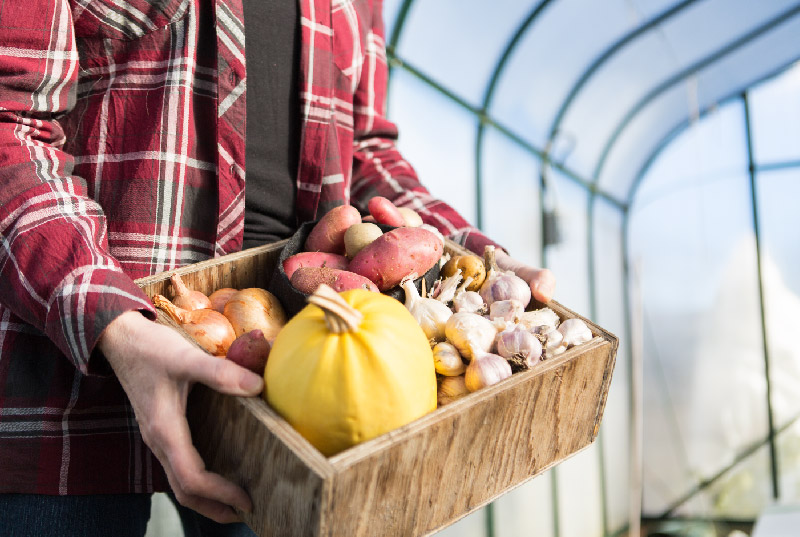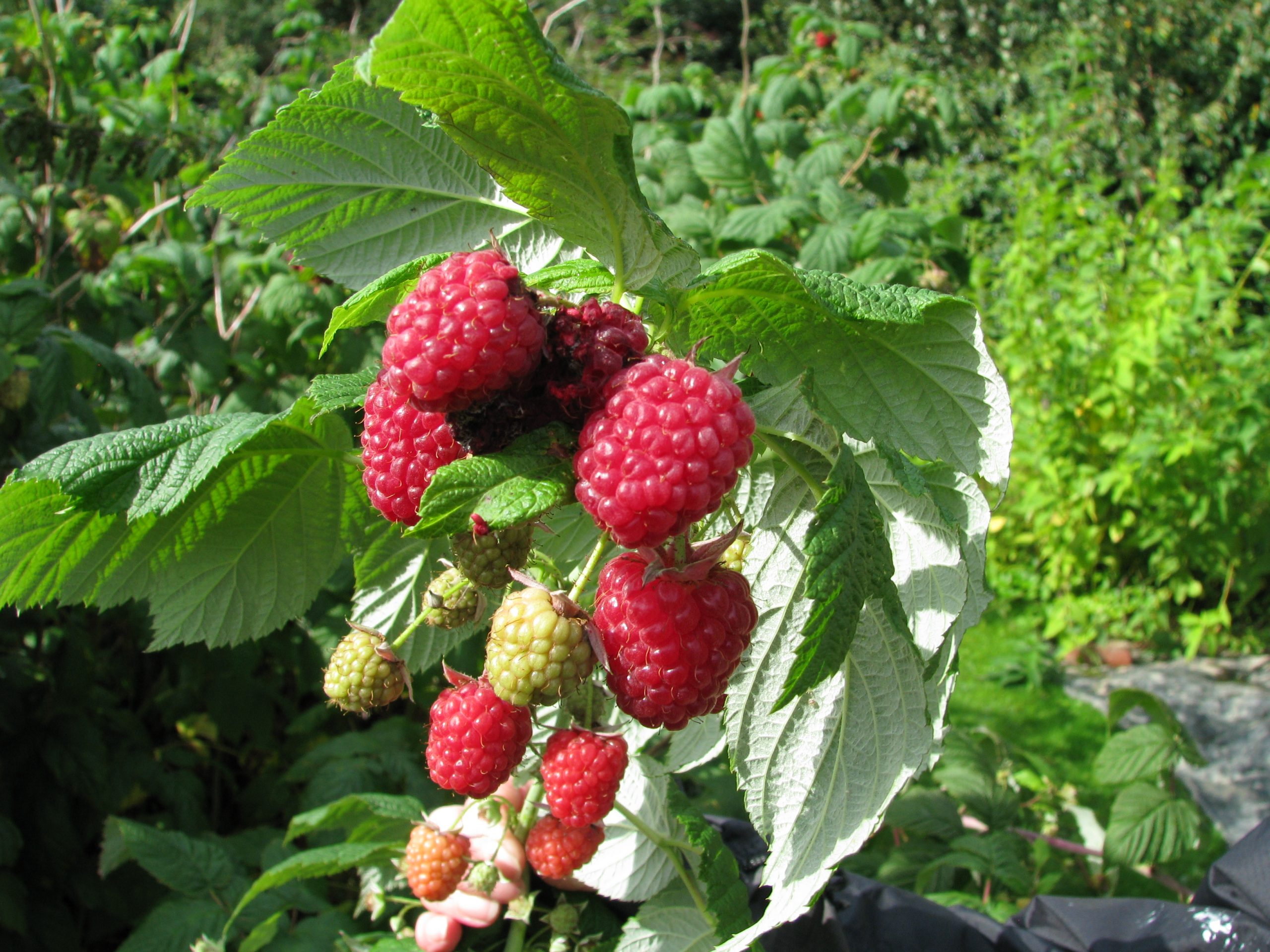
I help gardeners grow
& beginners blossom.
No seed left behind,
no soil unturned.
Together we can have lots of fun growing
great gardens using simple practical tips.
- Featured in -





Start saving & storing your garden seeds for a more more sustainable future
SIGN UP to get the FREE Seed packet PDF
X CLOSE

Raspberry Trouble – I am not alone with bad raspberries this year
George is off his game. He used to water, weed, pick and share his juicy raspberries and all the neighbors looked forward to his harvest. Well that was last year.
I knew George wasn’t feeling well so I offered to pick berries for him. I was thinking, rather confidently, I can bring a ray of light into his life.

Raspberries love shade and water. They hate weeds and poor soil.
Instead of being helpful, I was crushed. Like George, his plants are old and weak. We’ve had a dry summer, his berries are growing in full sun, and they are not being watered. They are shorter than normal. They are also full of grass and producing only a very few small fruit. It reminds me how fast a great garden dwindles if the owner can’t offer the care a crop wants and needs. Gardens fade fast.
Raspberries from High Level, Alberta to Qualicum Beach, British Columbia are suffering. On my #CBC radio show (Alberta at Noon, July 28th) I had calls about distressed raspberries, the queen of the summer fruit garden. When I visited my son in Smithers in July I saw his plants were also doing poorly. When I got home I saw my berries were no better. If you love raspberries and want even more fruit then do as I say, not as I do!
Raspberries are all either mid-summer bearing Floricane or the newer late summer bearing (not as common) Primocane. Most of us have Floricane berries from a friend or neighbour. Mine originally grew under the fence from my neighbour’s house!
Do you want to keep your berries at their peak? Follow these tips:

Raspberries growing in full sun get sunburned and then start fading and dropping leaves
Tip 1: Locate raspberries in a partial or fully shaded garden. I am surprised Raspberries grew in deep shade on the north side of my house in Calgary but that’s exactly where mine appeared after they crept through from Gerry’s garden next door. From this I learned raspberries like at least a bit of shade. Monika (@Macgyyver) confirmed this when she tweeted me that her berries in Edmonton have never been better than this year. She sent the reason on twitter: “I would guess it’s the shade from the lilac & apple. The monster vine next door keeps trying to come through [the] fence & strangle it all.” Monica says her berries are so prolific they are spilling on the ground. I wish I could say the same about mine, currently growing in a full-sun location and not loving it.
Tip 2: Raspberries need a lot of water. With climate change the forest fires started earlier this year and we know moisture is in short supply for our fruit trees and berries. I use to have an irrigation system on my raspberry patch at my new-to-me old house in Qualicum Beach. We even installed a big seven foot –tall structure to stop the tall plants from flopping over. Last year we tore apart the old irrigation system because it was so leaky and out of date and wasteful.
We need to replace or rebuild our watering system but instead we accidentally let our attention turn elsewhere and our raspberries are suffering. By the first week of July I took a good look at my shorter than normal plants and started panic watering. The new sprigs are now healthy and green and strong and the recent berries are plumper than the first ones, but the plants are noticeably shorter and the overall crop is smaller. Oops, Berries are mostly water and I need to water more consistently.
Tip 3: Most people grow the mid-summer-bearing Floricane raspberries. This means you have to prune not once but twice or three times. Honestly it doesn’t matter if you don’t know what kind of berries you have because here is the scoop: if your raspberries bloom in mid-summer on little side-branches off of last year’s stems, then you know you have old-school Floricane berries. This means you have to be careful how you prune. First thing this fall, cut back all of the branches that bloomed this year. As soon as the leaves have changed colour and all the essential nutrients have travelled down to the roots, cut back the stems that branched or bloomed this year right back to the ground.
Then, if you live in a cold climate, wait until spring before you prune again. This time, remove any branches that are winter-killed. These are the brown or black dead stems. The final step to pruning is to thin out what is left so that the individual stems are well spaced. This was the trouble in Smithers. My son didn’t know about the thinning step. He was cutting back the old canes but not thinning what was left. Leaving about 15 cm-30 cm between each cane is needed for the old school Floricane berries.
PS If you have Primocanes, simply mow them all back in spring like a perennial plant and let ‘em rip. They bloom later because they have to grow and bloom from the new stems and the timing depends on the weather. If I was planting a new patch I would search for both kinds of berries so you get an overall longer season of bloom.
Tip 4: My neighbor George and Allison from Grande Prairie both let grass creep into their raspberry beds. There is no cure for this. George’s patch looks like dense turf with very few raspberry plants. Luckily, raspberries are vigorous and will randomly sprout up next door (this happened to me) in a flowerbed, the lawn or a back alley as soon as conditions improve. If you want to be pro-active you can dig sprouts up, rip out the grass that came with them and put the grass-free plants in one gallon pots. Meanwhile, you can properly prep a new weed-free bed with plenty of manure and compost and when you are sure it is clean you can plant your potted berries. Then cut the old patch back and suffocate what is left of that row with an old rug or a combination of cardboard and bark mulch. You won’t be planting there for a while.

If you do get berries, you are probably also getting birds gorging on them. This creative gardener, Des Kennedy on Denman Island, put his berries under a screen cover to protect the fruit from predation.
Tip 5: Let yourself relax a bit, try to rescue plants you have by soaking and weeding and shading. Or extend the season of picking by adding Primocane berries in a new specially prepared, weed-free row. I bought a new Eliot Chipper this year and I top-dressed my raspberry row with the wood chips from a tree I trimmed. I added the chips to hold the moisture in, which was helpful. Still the plants are short compared to the well-watered summers of the past. So this fall I will add a topdressing of biochar and manure to “water, weed and feed” my patch. I will also put a drip watering system back into place before next spring (I promise.)
But most of all I will remember the lesson learned from all this energy expended: there is no way you will ever think the berries for sale at the market or store are overpriced or not worth every penny you paid for them.
If you want to see my embarrassing plants in a short video have look at this video below. At least you will know you are not alone with your berry troubles. You are in good company. Like my callers to CBC and my neighbour George I woulda, coulda, shoulda done something sooner in my berry patch this year.
http://https://www.youtube.com/watch?v=q7S0lb1Nv1Y&feature=em-upload_owner#action=share
Are your raspberries going off like milk after it’s best before date? It takes effort to get everything back to normal. A garden is not a forest. It needs care and attention.
What Would Donna Do?
Get my growing and gardening tips and pointers throughout the season.
















Thanks! Such a good follow-up to my article.
The easiest way to guarantee good quality raspberries is using a hay mulch. It can’t be too rotten: its fine if there are mushrooms growing out of the bale, or whatever, just break your bales and put down a 2 – 3 inch layer of the packed hay over all the patch, leaving just the existing canes poking through. New canes will push up, so the best time to do this is probably late fall or really early spring, but you will have no weeds to speak of: those that are will be rooting on top of the soil just under the mulch and will pull out easily, without digging.
You will see a number of exceptional results if you do this:
1. Your berries will be bigger. (In the words of a late friend of my mother, “I’ve never stheen berries thith big in my life!) It was an heirloom variety, not one of the new cvs, and the soil was a B.C. forest podsol – not as bad as what I grow on, but bad. In fact, raspberries are about the only thing, along with fruit trees on vigorous rootstock that do well for me. (As I live in a boron belt, I have to add it – a tablespoon of borax in a gallon of water, spread as you would phosphorous for garlic: walking fairly quickly down the row with the galvanized sprinkling can running , but in early spring.)
2. you will never have to clean the mud off your shoes again.
3. The soil has a much improved tilth, and that makes it easier to irrigate: the soil holds more moisture but doesn’t get waterlogged.